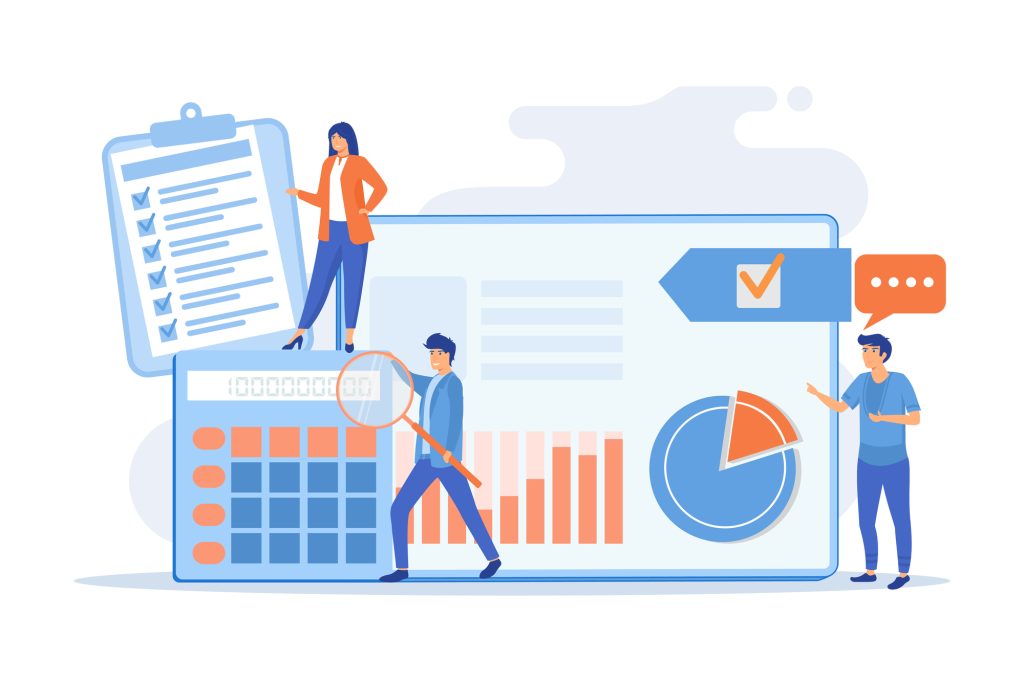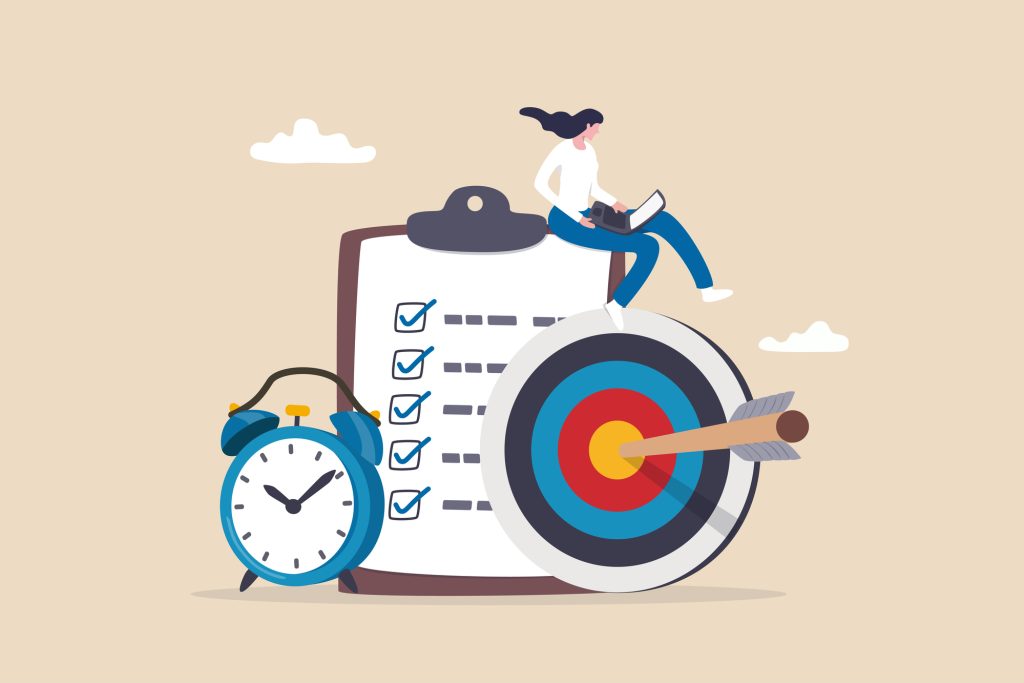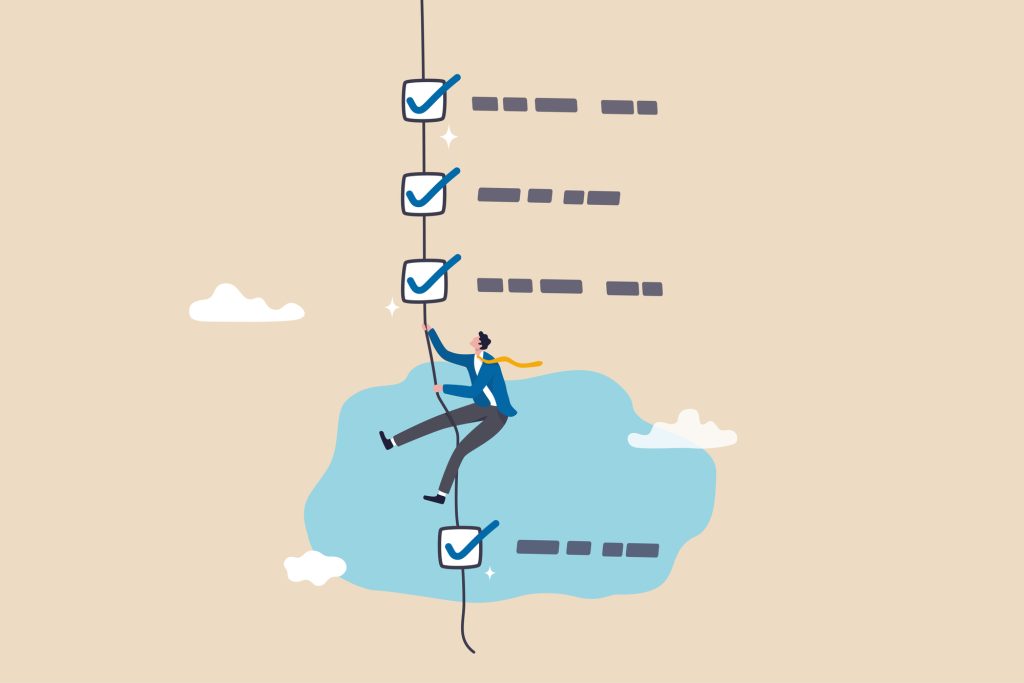If you have been following along in our series then you are already up to speed on the basics of what KPIs are, and why they are so important to help you keep your business on track, and your workflow moving. If you haven’t read KPIs: Tiny Metrics With Huge Impact yet, you might want to stop and read it now to ensure that you have all the information you need to fully understand and implement a KPI tracking program.
In today’s article, we will dig deeper and take a look at the key details that make an effective KPI, and we’ll give you a head start with ten top project management KPIs perfect for a small business or design agency.

Creating Effective KPIs
Let’s start by breaking down what makes an effective KPI, and the different categories you should consider tracking for the most complete snapshot of your business and team performance.
The S.M.A.R.T.E.R Method
The S.MA.R.T.E.R method can help you remember the 5 factors and 2 actions that are most important to crafting useful KPIs that deliver the results you are looking for. S.MA.R.T.E.R stands for Specific, Measurable, Attainable, Relevant, Time-bound, Evaluate, and Reevaluate.
Your KPI should be:
Specific: The KPI should track a well-defined metric
Measurable: The metric should be tangible so that it is easy to track and measure
Attainable: Your expectations & goals for the desired KPI measurement should be attainable
Relevant: The KPI should track activity, budget, or quality control metrics that are relevant to your brand’s success
Time-Bound: The KPI should have a definite start and stop point to generate a concrete result
Evaluate: You should evaluate your KPI after a cycle or 2, and make any necessary adjustments if you notice gaps in the reported data
Re-Evaluate: Re-evaluate your KPIs on a regular basis to make any needed adjustments as policies or staff changes occur

Create Synergistic Groups Of KPIs
You can make the entire tracking process much easier on yourself and your team, and make it easier to spot relevant patterns by grouping related KPIs together so that you can analyze individual metrics or readily combine metrics from within the group to get a bigger picture view.
Consider grouping marketing KPIs like website click-through rates, conversions, and PPC data in one group.
Establish Benchmarks
Of course, to be effective you will need to establish some initial benchmarks to act as goals or targets for your KPIs. These will act as the initial yardstick of sorts that will tell you where you are at, and how close you are to your desired performance levels or how far you will need to go to get back on track.

Ten Top Project Management KPIs
At this point, you likely already have a few core items in mind that you want to track. If you are in need of a bit more inspiration, we have provided a list of ten common project management KPIs well suited to use by small businesses or design agencies.
1. Project Completion Rate
This KPI can be used to keep track of how many projects an individual team member is able to complete within a predefined time period. This KPI can also be adapted to track the number of projects completed by the team or the agency. When used alongside revenue KPIs for the same time period it can contribute to the bigger picture of how profitable your business is in the given period.
2. Time Required To Complete A Project
Create a KPI that tracks the time required to complete specific projects. This data can then be compared against other projects of the same type and scope to help establish an estimated turnaround time. Use this knowledge to manage client expectations about the time required to complete their project and provide more accurate estimates of project costs to avoid any surprises.
3. Client Satisfaction Rate
Just as it sounds, a client satisfaction rate KPI gathers information related to the level of client satisfaction with the business or agency. This measures how happy clients are with the services or products they have received from your business or agency. Typically customer satisfaction KPIs will need to be gathered rather than tracked. Surveys and digital or paper feedback forms are both popular methods for getting a solid sample size of useful information from your clients.

4. Customer Conversion Rate
The conversion rate KPI is a measure of the number of unique individuals who have had the opportunity to view your promotional materials and have made it to your website, sales page, sign-up form, shopping cart, or whatever the stage is where they will need to take the next step to enter into a transaction with your business. The conversion rate KPI tracks what percentage of the individuals who made it to this particular point commit to taking the next step in transacting with the business or agency.
The conversion rate KPI is generally used as a tool to assess the ongoing effectiveness of your marketing and outreach strategies and the strength of your offer. You may want to consider having several conversion rate KPIs set up to track the level of conversion at various crucial stages between first introduction to final purchase. Having multiple conversion rate KPIs will allow you to not only determine if your efforts are working but also to determine which efforts are working better than others and what specific strategies or ideas might be turning potential customers off.
5. Customer Retention Rate
Customer retention rate KPIs are designed to track the percentage of customers who make repeat purchases or otherwise continue to actively interact with a business or agency over time. When combined with other KPIs, like the customer conversion rate KPI, it can be an important measure of whether the business or agency is delivering a product or service that provides value to their customers and helps to provide a snapshot of the true health of an enterprise. For example, if a design agency is noticing a steep drop off between their conversion rate and their retention rate this would indicate that their marketing and promotion are strong and customers saw a value in their product or services but may have been unhappy with the results or found a better value from a competitor. If the agency wants to remain successful it will need to do some investigation to discover the specific cause of a low retention rate and take active steps to correct course before any additional customers are lost. Remember, it is much easier to make the effort to keep existing customers than to try to find and win over new ones.
6. Billable Hours
If you are operating any type of commercial business or agency you will always need some method of tracking the time spent working in service of the business or its customers. In the event that you are running a solo operation with you owning the business and performing all of the tasks, you would set up a billable hours KPI to track the hours that you spend working in direct service of a client, or on tasks that relate to generating the agreed upon results for the client. When you have staff working to help you complete these tasks you will need to measure the billable hours that the individual employee spends working in service to the business or agency so that you are able to compensate them for their time. You will likely also need to set up additional billable hour KPIs to measure the amount of time the employee spent working on specific tasks. Finally, you can set up a billable hours KPI for individual clients, projects, or tasks so that you have an accurate and detailed record of the hours spent completing work for the client that can be presented to the client when payment is requested.

7. Revenue Per Employee
The revenue per employee KPI aims to determine how much revenue each employee generates for the business. In its simplest form, this KPI is calculated by determining the total revenue for a specific time period and dividing that total by the number of employees working during that period. The revenue per employee KPI produces a very general average and additional KPIs for accurate reporting and analysis of individual staff value vs. cost in more complex business structures with multiple employees all performing different types of activities that each generate different forms of revenue.
8. Budget Range KPI
A budget range KPI is used to help you gauge how accurate your business budgets are. This could be implemented on a broad scale to measure the accuracy of the budget for the business or agency as a whole, or it can be used to audit the accuracy of the budget for individual projects or client orders. There are a couple of ways to go about this. For a general budget variance KPI you would establish an anticipated budget for the business or for an individual client, project, or task, and establish an end point for the budget. In the case of a project or task, this would usually be the completion date.
For a business or client budget, you would need to establish a reporting time period for invoicing or billing. With the parameters established, you would then track the actual amount spent on the business, client, project, or task for the target period and compare the total actual cost to the estimated budget to determine the degree of variance between the two totals. This allows you to identify areas where you are over- or under-estimating the cost of running your business or completing particular actions. In the event that there is a significant variance between the totals, you could then use additional KPIs to hone in on the source of the discrepancy.

9. Profit Margin
A profit margin KPI is another simple measure that is used by all enterprises of any size. Essentially, if you are performing any commercial activity you will incur costs to create the product or perform the service that you are selling, and you will need to pay for those expenses with the revenue that you earn from the clients who purchase your products or services. The profit margin KPI measures the amount of earned revenue that remains after the business-related expenses have all been satisfied. This is a vital bit of data for any business because it is the surest way to determine if a business is producing a net positive for the business owner or if it is costing them money in the long run.
Businesses and finances are complex with a constant flow of money flowing in and out. If these basic KPIs are not carefully tracked it can be easy to assume that business is solvent because there is a great deal of money flowing into the business. However, if there is some hidden, or unnoticed expense costing the business more than expected or budgeted for, the business could ultimately be heading in the wrong financial direction.
As a business owner, you want to consistently monitor your profit margin to ensure that your enterprise is maintaining the healthiest possible balance between expenses and revenue and be on the lookout for ways to improve your profit margin by either boosting revenue or reducing expenses.
10. Return On Investment (ROI)
The return on investment (ROI) KPI measures the value that you derive from the dollars that you spend on various business-related expenses. Everything comes with a cost in terms of time or money. The return on investment KPI focuses on the monetary cost of various business-related investments so you will need to have a way of assigning an accurate monetary value to any time investments. This is usually accomplished by tracking the hours spent working on a particular task and assigning a dollar value to an hour of your or someone else’s time. This would then be your labor costs or the amount spent on the time and effort of producing a product or service. That being said this is just one variable that you could measure using a return on investment KPI. These KPIs are simply measuring the value (usually monetary, but could be more complex) that you gained from a specific investment. The goal of the return on investment KPI is to determine if a particular investment is worth continuing or should be altered or eliminated altogether.








